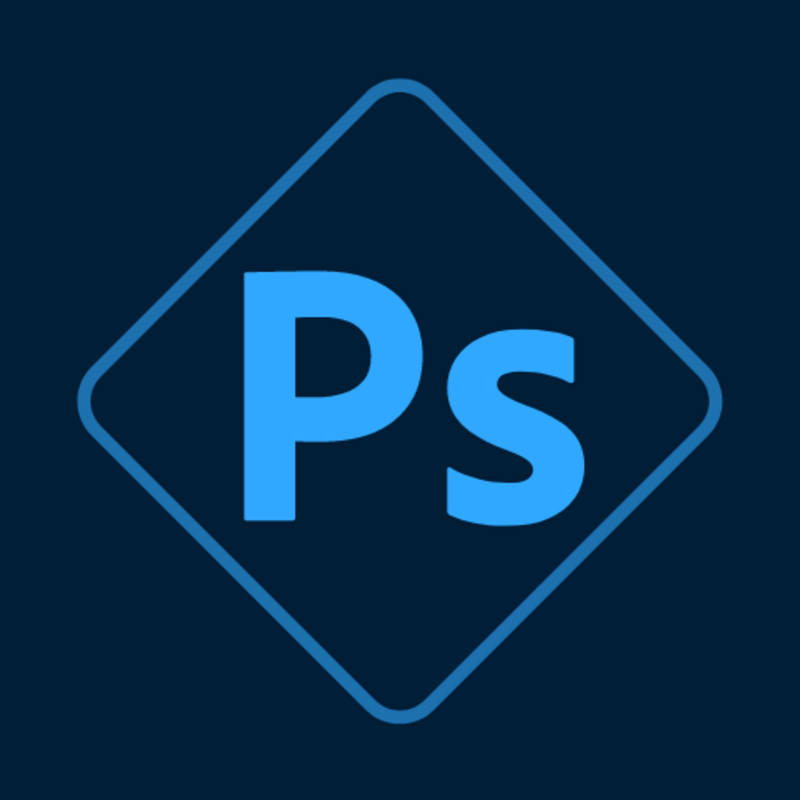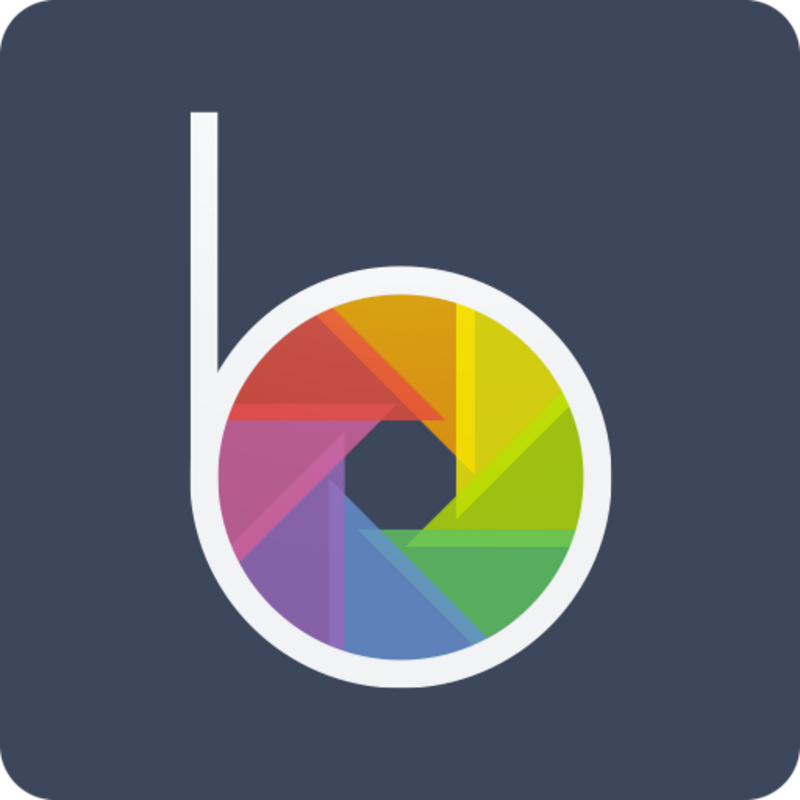11 Best Photo Editing Apps Of 2023
When trying to capture a great photo, pressing the shutter button is just the first step. Next comes image editing, a process that can be simple or complex, depending on the photo editing app that you use.
Advanced and amateur photographers rely on photo editing software to optimize their images. That being so, there are thousands of photo editing apps available: Whether you want to remove unwanted objects from a professional photo or need a simple, free photo editor for your social media posts, there's an app out there for your specific needs.
To save you some time scrolling through the app store, we've gathered a list of the best photo editing apps of 2023.
Our Top Picks For Best Photo Editing Apps
- Picsart: Best Overall
- Canva: Best For Social Media
- Adobe Lightroom: Best Tutorials
- Snapseed: Best Free App
- Photoshop Express: Best For Photoshop Loyalists
- Pixlr: Best For Casual Users
- BeFunky: Best AI Features
- VSCO: Best For Traditional Photographers
- piZap: Best For Fun Photos
- PicCollage: Best For Collages
- PhotoPea: Best Web-Based Editor
Best Photo Editing Apps Reviews
Initially released in 2011, Picsart includes various photo and video editing options as well as a social community platform. The interface is easy to navigate and control; there are also plenty of options for photo fine-tuning, retouching and correction.
Users can design collages, create stickers and apply an extensive list of filters. The Remix Chat feature makes the editing process more social and collaborative. You can work with friends or some of the other 150 million PicsArt users to edit your photos.
Picsart is free to use on all platforms. Users can unlock additional tools with a premium subscription, which costs $11.99 per month or $55.99 per year. PicsArt also offers student discounts.
Canva is a graphic design platform launched in 2012 and is by far one of the most user-friendly photo editing and graphic design applications on the market. You can automatically resize and format an image to post on platforms like Instagram and Facebook. You can also use fun features like text animation, captioning and speech bubbles.
Canva is an excellent option for beginners because it includes a standard set of photo editing features in an easy-to-use, drag-and-drop interface. Images you edit on Canva can also be downloaded as PDFs or added to many available templates to create unique branding or marketing materials.
Canva offers three types of plans.
- Canva Free, the basic version of the app, includes limited feature access.
- Canva Pro allows you to access more than 600,000 additional templates, develop custom branding and use 100 gigabytes of cloud storage for $12.99 a month or $119.99 a year.
- Canva for Teams has a scaling price structure based on the number of users and an added set of features, including workflows, team reports and insights, and enhanced customer support.
Note that free users of Canva will find many templates locked. To obtain full access, users must opt for a premium subscription.
Adobe Lightroom Mobile is one component of a workflow system that offers photo library storage and simplifies syncing and accessing your original and edited files from any device.
Lightroom has exceptional features and tools to alter exposure, saturation and color with simple slider controls. It also uses nondestructive edits, so you can always restore your original images if you change your mind about the edits.
Perhaps the biggest draw to Lightroom are its capabilities as a learning platform. The app has a library of tutorials on many photo editing subjects. You can also access the Discover area, a creative cloud environment where you can watch the steps other artists took when they created their images. Lightroom lets you add your projects to Discover and help others learn from your edits.
You can purchase the full Lightroom system on desktop or buy the mobile app for only about half the cost. The price of the former starts at $9.99 per month. If you opt to use only Lightroom Mobile, you can get the basic version for free or pay $1.99/mo for the premium subscription, which includes 100 gigabytes of storage space.
After its launch by Nik Software in 2011, Snapseed was purchased by Google and quickly became very popular as photo editing freeware. Very few free photo editing apps come close to Snapseed's array of tools and features, which immediately puts it high on the list of the best photo editing apps.
Snapseed's nondestructive editing protects your original photos, and the stacks brush makes it possible to apply an effect to only a specific area of an image. You can also apply a set style, saved as a "look," to multiple images or share it for others to use.
Snapseed empowers you to embrace your creativity while enhancing or transforming your photos, making it one of the best photo editing apps you can use — if you can get past its high entry barrier.
Photoshop is perhaps the most recognized name in the photo editing business. With Photoshop Express, users get the same quality and performance as standard Photoshop, including high dynamic range (HDR) images. However, as Express offers a more limited set of features, it's better suited for casual users or professionals who need to perform last-minute image editing on the go.
As the name suggests, Photoshop Express is a pared-down version of Photoshop. While it doesn't include all the bells and whistles of its namesake, it does contain essential tools like blemish removal, text overlays, masks, gradients and compositing. It also includes fun features like caricature filters and supports raw camera files.
Photoshop Express is less expensive than Lightroom, the other Adobe option on this list. If you want to upgrade from the free version, you'll be paying $2.99 per month or $34.99 per year.
Web-based photo editor Pixlr was established in 2008 and has remained popular with photo editors ever since. It's easy to jump in and get started for free, making it ideal for beginners and casual photo editors.
BeFunky's artificial intelligence uses "Style Transfer" to make your favorite photos look like works of art. This unique effect can turn a simple photograph into something truly special.
Pixlr offers a user-friendly interface and tons of great features, including templates, overlays, creative layouts and standard photo adjustment tools. It's super handy for creating fun collages with cartoon-style stickers and fine-tuning photos with an array of brushes, filters and borders.
Pixlr is free with ads. To remove them and access the app's complete set of features, you can pay a subscription fee of $11.99 a year or $1.99 a month.
The BeFunky mobile app has been around since 2011, following the launch of its web-based tools in 2009. BeFunky is well-balanced, with a user-friendly interface and plentiful features. It includes a tremendous selection of tools, design elements and fully-customizable templates.
However, the basic version of the app is likely too limited for advanced users, and ads can be extremely intrusive. BeFunky truly shines when you pay for its premium version, which includes layer editing, the ability to quickly remove objects from the image and multiple artificial intelligence (AI) functions, like the portrait enhancer.
The free version of BeFunky has limited functionality, but you can upgrade to the paid version for $9.99 a month or $59.99 a year.
Visual Supply Company, better known as VSCO, was established in 2011 and is ideal for fans of traditional photography. The app can import RAW files and includes a wide variety of photo correction and adjustment options, including film-emulsion filters. The iOS version also has a slate of pre-capture controls, like selective focus points and manual control over white balance.
With VSCO, you can also easily post your images to social media. However, the free version has limited options regarding selective edits, text and special effects.
VSCO's free photo editing app is limited to basic editing tools for images. You can pay $19.99 a year to access more features, including a video editor, more than 200 filters and presets, advanced editing and montage tools and improved training and support.
Since its launch in 2008, piZap has become one of the best fun photo collage makers, gathering more than 50 million monthly users. The user interface for piZap is easy to navigate, and the app's features are generally self-explanatory. With the ability to make memes, emojis, stickers and app icons, piZap is a great choice for social media users.
piZap is ideal for casual photo editors who want to tweak their images and create a witty collage with filter effects, text, stickers, borders and even photos inside photos. The free app version is great for adding fun and whimsical effects, but more advanced editors may want to upgrade to the premium version for more detailed features.
The basic version of piZap is free, but piZap Pro will cost you $5.99 per month or $35.99 a year. The Pro version includes additional templates, fonts, images, filters, stickers, borders and layouts.
PicCollage was launched in the App Store in 2011 and has since maintained its status as one of the most popular collage-maker apps. The app is very easy to use thanks to its automated collage layouts. Likewise, it gives you plenty of ways to customize your photo arrangements into layouts and designs you prefer.
If you want to create a shareable collage quickly, PicCollage may be the answer. All you have to do is upload your favorite photos, and the app will instantly arrange them into an eye-catching layout.
If you'd rather have more control over your collage, you can flip images and create your own free-form design. You can then finish your photo compilation by adding some filters, frames, cutouts, borders, text and stickers.
PicCollage is free with limited features. Pay $4.99 a month or $35.99 per year for a VIP subscription, and the app will remove the watermarks from your collages.
Photopea is another advanced image editor, but unlike the other options on this list, it's exclusively available for web use. Although you can download the software to your Windows PC or Mac, there's no mobile app available.
If you're looking for a free or low-cost alternative to the traditional format of Photoshop, you're unlikely to find a better option than Photopea. The web-based editor includes a sizable template catalog, a variety of editing tools and support for RAW files.
Photopea may not be appropriate for casual users because the interface is more difficult to navigate, and the fact that it requires an internet connection may be a deal-breaker for editors who want to access their files from anywhere. Nonetheless, for advanced photo editing experts familiar with Photoshop and similar software, Photopea has valuable features at a low price.
Photopea has a free version with ads and a premium version for only $3.33 per month, which includes all features and has no ads.
Other Apps We Considered
While we've selected these photo editing apps as the best on the market, that doesn't mean there weren't other strong contenders. The following are some of the apps that didn't quite make the cut:
- Polarr: Like some of the other options we've described, Polarr has an online community for photo editors. It also has a clean, simple interface and a wide range of features.
- Polish: Polish is one of the most affordable photo editing apps. The paid version is only $7.99 a year and grants you access to an array of advanced tools and features.
- Pexels: Pexels isn't technically photo editing software. Rather, it's a stock photo app that lets you download images for use in your graphic designs.
- Afterlight: Unlike many photo editing apps, you can buy a permanent subscription to Afterlight for $35.99 and enjoy it on Android and iOS. Unfortunately, the creator has not updated the Android version of the app for several years.
- Apple Photos: Available exclusively for iOS, Apple Photos gets preinstalled on all Macs, iPhones, and iPads. The mobile app allows you to modify many elements of your photos, including white balance and shadows.
- PhotoDirector: This app allows you to use AI-powered features to animate photos.
- Prisma: Similar to BeFunky, Prisma allows you to transform ordinary photos into artistic masterpieces.
Several of these apps have specialized uses that make them worthy in their own right. For example, you might want to use Picsart as your go-to photo editing app but also download Prisma to keep on standby when you're feeling particularly artsy.
Photo Editing Apps Guide
Even with a narrowed-down list of options to help guide you, choosing the right photo editing app can still be an overwhelming prospect. Keeping some key points in mind can help simplify the process.
Main Things To Consider When Choosing A Photo Editing App
If you want to avoid trying out multiple photo editing apps, a little initial research can help save time. You can start by asking yourself a few key questions:
- What features does the app include?
- Is it compatible with all of the devices you'll be using?
- Is there customer support available if you have a problem?
- How frequently is the software updated?
- If there's a fee involved, are you renting or buying the app?
- Is it easy to use or will you need a tutorial or training?
Your answers to these questions can help determine whether an app is a good fit for you. For instance, if an app hasn't been updated in several years, that's a sign that you may want to avoid it. In this case, it's unlikely to have strong customer support, and the software may have bugs that are unlikely to get repaired.
What Is The Average Cost Of A Photo Editing App?
There are photo editing apps available at every price point. Some are free, with all their features available at no extra cost, whereas others have limited functionality until you pay for their premium version.
Many apps allow you to pay a monthly fee, often between $3.99 and $11.99 per month, at a discount if you pay for the entire year upfront.
How Do You Choose The Right Photo Editing App For You?
Choosing the right photo editing app comes down to two things: your budget and what capabilities you need.
Budget
The first issue to address is how much you can afford. A free app is more than enough for many casual users. However, if you're hoping to make money from your photos, it's worth investing in a higher-quality app that gives you more control over every aspect of the image.
If your funds are limited, spending a few dollars a month to try out a premium version of an app might be a good first step. You can then decide if you need to invest additional money for the app's more advanced features.
Capabilities
Do you want to take professional-grade photographs or just up the ante on your social media selfies? Based on your personal or professional needs, you can look for the ideal combination of features, including:
- A simple user interface
- Filters
- Presets and auto features
- Size customization
- Background cleaning
- Layered editing
- Blending
It's also essential to think about cross-compatibility. If you want to work on multiple devices, getting an app that is available on multiple platforms may pay off in the long run. Some are limited to only iOS, Android or web-based software and may not accommodate your usage needs.
Is It Worth Paying For A Photo Editing App?
Whether you should pay for a photo editing app depends largely on why you need the images. If you're planning to use them professionally, as part of your branding or in marketing materials, you might want to pay for a full set of features so that you can optimize your photos. On the other hand, if you're a casual user who doesn't mind the occasional ad, a free app can probably handle most of your basic editing needs.
Photo Editing Apps FAQ
How We Found The Best Photo Editing Apps
We scoured the App Store and Google Play store, looked through photo editing app sites and read user reviews to decide which apps to include on this list. With so many apps and factors to consider, it was no easy task limiting the list to just 11 options.
However, after some thorough research, we were able to make a rough selection. Testing out some of the key features of each app also heavily influenced our decision, as we wanted to see first-hand whether an app is easy to use, offers valuable features and is overly aggressive with ads.
Summary Of The Best Photo Editing Apps Of 2023
- Picsart: Best Overall
- Canva: Best For Social Media
- Adobe Lightroom: Best Tutorials
- Snapseed: Best Free App
- Photoshop Express: Best For Photoshop Loyalists
- Pixlr: Best For Casual Users
- BeFunky: Best AI Features
- VSCO: Best For Traditional Photographers
- piZap: Best For Fun Photos
- PicCollage: Best For Collages
- PhotoPea: Best Web-Based Editor










